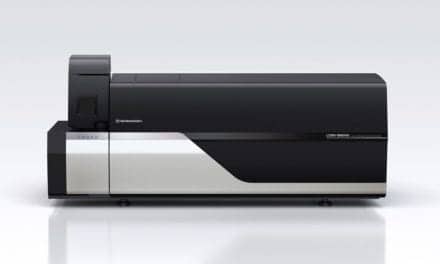Summary: Thermo Fisher Scientific launched the iCAP MX Series ICP-MS, which features advanced single and triple quadrupole systems, to streamline trace elemental analysis for environmental, food, industrial, and research labs, improving efficiency and accuracy in detecting harmful substances.
Takeaways:
- The iCAP MX Series ICP-MS offers high performance and sensitivity, ensuring reliable trace element analysis without compromising between matrix load and sensitivity.
- These instruments are designed to meet the diverse needs of labs in sectors like environmental testing, food safety, and industrial research, enabling detection of contaminants such as lead or mercury.
- Advanced features like argon gas dilution and minimal interference reduce maintenance, increasing lab productivity by extending the time between user maintenance and improving throughput.
Thermo Fisher Scientific launched the Thermo Scientific iCAP MX Series ICP-MS to simplify trace element analysis with inductively coupled plasma mass spectrometry (ICP-MS). The launch includes a new single quadrupole Thermo Scientific iCAP MSX ICP-MS and triple quadrupole Thermo Scientific iCAP MTX ICP-MS designed for environmental, food, industrial, and research labs to analyze routine and challenging trace elements to detect and mitigate harmful substances.
Improving Trace Elemental Analysis
Laboratories that face challenges in analyzing trace elements in complex and diverse matrix samples require sensitive and flexible instruments to deliver consistent results that support analytical research and quality testing. The single quadrupole iCAP MSX ICP-MS delivers a high level of analytical performance without the usual compromise between matrix load and sensitivity, enabling users in applied analytical labs to consistently analyze various elemental samples. Building on this performance, the triple quadrupole iCAP MTX ICP-MS offers interference-free analysis for heightened confidence when analyzing more complex samples.
From environmental testing to food safety, the MSX ICP-MS analyzes a range of samples to meet regulatory and turnaround requirements. Environmental testing labs gain the ability to detect contaminants like lead or mercury to prevent harmful human exposure in drinking water or other environmental samples. Food safety labs achieve fast and accurate analysis of toxic and nutritional elements to ensure food products are safe for consumption and that food labeling requirements are met throughout production. Additionally, labs supporting the high-tech industry can use either instrument in the iCAP MX Series ICP-MS to support production sites and accelerate research discoveries.
“The iCAP MX Series ICP-MS provides simplicity and detection capability without the tradeoff on performance, ultimately maximizing end-to-end productivity to achieve reliable results the first time and increase throughput,” says Alexander Grunewald, VP and general manager of Applied Analytical Technologies at Thermo Fisher Scientific. “By supporting accurate and reliable trace element analysis across environmental, food safety and industrial markets, our instruments help customers in their quest to make the world healthier, cleaner and safer by removing harmful and toxic substances from our everyday lives.”
Further reading: Thermo Fisher Scientific Unveils New Lab Connectivity Solution
Improving Lab Productivity
Routine maintenance and the associated re-turning of the instrument also can slow productivity in the lab, especially for labs handling heavy matrices. The iCAP MX Series ICP-MS platform combines minimal interference with the flexible matric capabilities of argon gas dilution to ensure the right-first-time analyses of samples.
The argon gas dilution features an integrated new cone design and advanced tuning techniques that extend the period between user maintenance from multiple times per week to weekly or less to minimize downtime and improve efficiency.
Featured image: Thermo Scientific iCAP MX Series ICP-MS platform balances sensitivity and efficiency to deliver accurate and precise analysis of high matrix samples. Photo: Business Wire





